Friday
Community ArticlesOuter, Inner and Secret Levels Of Shambhala Center Design
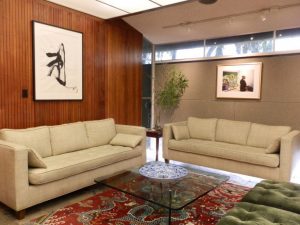
Community Room in the Los Angeles Shambhala Center
By Shastri Russell Rodgers
A few years ago, the Kootenay Shambhala Centre in Nelson, British Columbia, Canada, purchased a building. Because we had to acquire the services of a non-sangha architect for the renovations, it seemed like a good idea to summarize in “non-shambhalese” language some of the basic elements of how a Shambhala Centre functions and how it is designed. Here is what we gave to our architect. In our case, we are pleased with the result.
In Shambhala design, one has three levels of manifestation. Ideally, these are reflected in the spatial organization of the building. For a more complete description, see Shambhala Environments. To put it briefly, here are some main points:
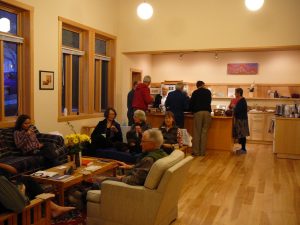
Community Room in the Kootenay Shambhala Center
1. There is an outer level that is reflected in what one can perceive directly with the senses. Anyone can see this: these parts of the building are the most public, the most obvious, and the most universally accessible. The entry, community room, children’s room and kitchen operate on this level. In our case, the kitchen is in the open space in the community room, opposite the entry from the outside. The kitchen creates some sense of hospitality and warmth. There is an island with stools that creates a bit of separation from the couches and chairs. The island is where people tend to gather first, migrating to couches and chairs later.
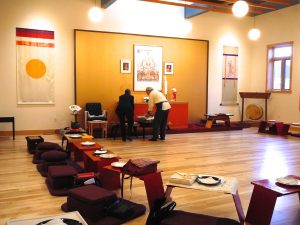
Shrine Room in the Kootenay Shambhala Center
2. There is an inner level that reflects energy and felt atmosphere. This level is felt individually by each person, and its meaning has to be personally experienced. What one individual feels is not obvious to others, because it is an inner experience. This level is what is being worked on in the main shrine room. People might feel a sense of spaciousness and presence in that room, but they would also be concerned with their thoughts and perceptions that occur within that spaciousness. Spatially, it would be near the community room, but it would need to be somewhat protected from its sound and activity.
3. There is a secret level that reflects ultimate understanding. Like the inner level, it is not obvious to others – but here it is even less obvious. It refers to the most basic level of mind, the spacious emptiness that cannot be described with words, but which has the power and potential to manifest as thoughts, emotions and perceptions. Here we are dealing with the empty mind itself, beyond the obvious thoughts and perceptions. Access to this level is transmitted by realized persons in the lineage. Subsequent to that transmission, the vajrayana practices bring the practitioner towards fruition.
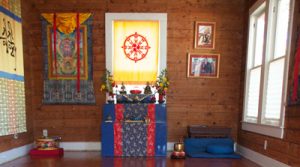
Vajrayana Shrine Room in Austin, Texas
The vajrayana shrine room would be in a part of the building that is the least accessible, reflecting the fact that it would be a mistake to try to interpret this level with conventional words and thinking. At the same time, it reflects the ultimate importance of the secret mandala. In our case, it has iconography that would challenging for many people to translate to others.
It’s not that the public is cut off from the inner and secret parts of the building, but there’s a sense that preparation is required both to experience it properly and to understand what one has experienced. If these areas are not somewhat protected, their meaning will get lost in the shuffle.
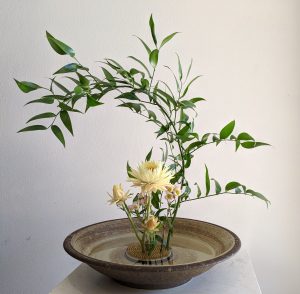
Photo by Anna Cicognani on Unsplash
As an example of the three levels, we could look at an ikebana arrangement. On the outer level, anyone can see the flowers. On the next level, there is the spaciousness, energy and beauty of the arrangement. Each person experiences this in private on an inner level. On a secret level, there is the spacious and powerful nature of the mind itself. This level is the ultimate nature of the both the images themselves and the mind that manifests those images.
All the different levels, within and without the building, should reflect a sense of dignity, wakefulness, uplift and spaciousness. However, as one gets closer to the secret level, the décor reflects this more and more and takes on a transmission quality.
Especially on the inner and secret levels, the sense of presence that one might experience is called drala. Drala means “above the enemy”. In this case, it might mean that one’s habitual self-talk just stops. One has a sense of just being there, tuned in, open. Dralas are attracted whenever people care for their environment and have a sense of sacredness towards it. Landforms, well-kept gardens, and ikebana arrangements attract drala.
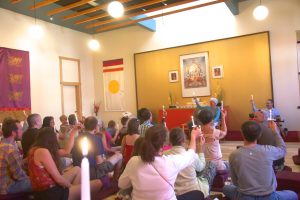
Banners, lights, and people in the Kootenay Shambhala Center Shrine room
Dralas can be viewed as not separate from one’s mind, or as atmospheric presences that come and stay in the space even when one is not there. Shambhala centres work with attracting drala using banners, flower arrangements, artwork, shrines, and carefully chosen colors on the walls. Ideally, the presentation of the signage and the exterior of the building should communicate a sense of wakefulness and attitude of profound respect for the materials that are used.
When people practice wakefulness for a long time in a space, it takes on a particular quality that is palpable, even to newcomers–a sense of peace, spaciousness and lack of struggle. Our Centre participates in interfaith groups, and people from other churches often comment on this.
On the one hand, the dralas that gather where we practice can be driven away by sloppiness and lack of respect. On the other hand, if one has an attitude of sacredness and respect towards the environment, the dralas will gather and stay.
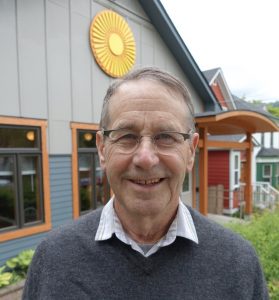 Russell Rodgers lives in Nelson, a town of 10,000 in the mountains of British Columbia. It is a place of many dralas. He has practiced there since 1975 with a sangha that owns its own building and has about 50 members.
Russell Rodgers lives in Nelson, a town of 10,000 in the mountains of British Columbia. It is a place of many dralas. He has practiced there since 1975 with a sangha that owns its own building and has about 50 members.

















Dec 20, 2019
Reply
Russell, you have given us so much and you continue…thank you very much.
Dec 17, 2019
Reply
Excellent activity, excellent article.With big affection…and to Margaret too!
Dec 14, 2019
Reply
Another awesome example of your decades’ long reminders to us all of the outer, inner, and secret levels of our lives, physical spaces, and environment. With tremendous gratitude.
Dec 13, 2019
Reply
Nicely done!